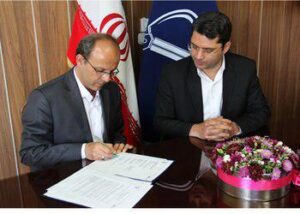Keyvan Hosseini told a press conference on Tuesday that “the main contents of this memorandum of understanding are in the field of research on earthquake data, especially quakes occurring around the city of Mashhad.”
He added that the School of Geosciences at the University of South Florida is one of the most advanced international science centres, and the signing of this memorandum can lead to joint valid research.
Meanwhile, Dr Ehsan Qaboul, the Director of Scientific and International Cooperation and Non-Iranian Students Affairs, also highlighted the University’s strategy of getting in touch with the best universities of the world with the aim of promoting its academic level.

Iran is one of the most seismically active
countries in the world, being crossed by several major fault lines that cover at least 90% of the country. As a result, earthquakes in Iran occur often and are destructive.
The deadliest quake in Iran’s modern history happened in June 1990. It destroyed the northern cities of Rudbar, Manjil, and Lushan, along with hundreds of villages, killing an estimated 37,000 people.
Bam in the country’s southeastern province of Kerman witnessed a strong quake in December 2003 which killed 31,000 people.
